Pans for induction hobs: what should be and how to choose?
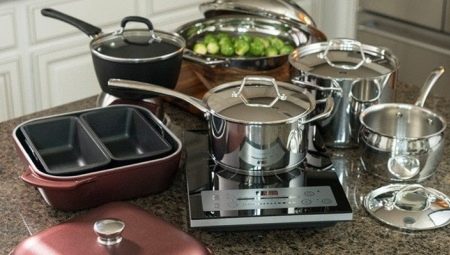
Today, hobs and cookers operate on different heat sources. Therefore, in addition to the usual electric and gas burners, you can find induction cookers, which require special dishes, in particular, pots.
Requirements
Induction hobs and hobs are increasingly being purchased and installed on the worktops of modern kitchens.
The advantages of induction hobs are their functionality and economy.
However, this technological innovation requires housewives and cooks to use special utensils for cooking. This is due to the design features of such panels.

The surface of the plate is made of glass ceramics, while electromagnetic coils are placed inside., forming a magnetic field and generating a current, which acts as a heating source for dishes with food standing on the stove. In this case, the panel itself does not change its temperature.
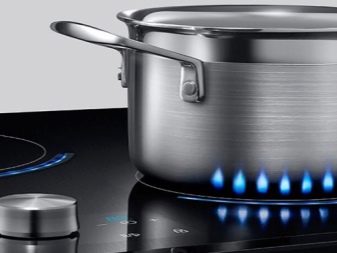
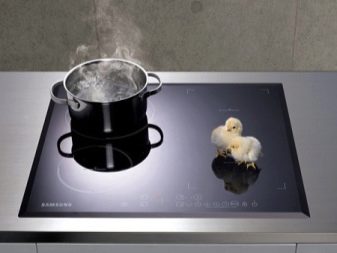
In order for the whole process to function according to the established scheme, certain requirements are imposed on the dishes used on such a stove.
- First of all, it is necessary that the pan is made of metal (aluminum, copper, steel, etc.) that has magnetic properties. Glass, ceramics and other raw materials, which do not have such features, will not be heated. An exception is utensils with a special magnetic bottom.
- Another important condition that determines the compatibility of cookware with an induction hob will be the thickness and diameter of the bottom.The first parameter can vary from 5 to 10 mm, while the diameter should not be less than 12 centimeters for maximum coverage of the hob on the hob. Pots with a thin bottom will deform much faster when exposed to high temperatures.
- In addition, the structure of the bottom is important. The pots can be made in the form of a solid sheet of stainless steel or with a bottom consisting of several layers (from 3 to 6), which together form a kind of "sandwich".
For the correct selection and operation of suitable utensils, manufacturers use a special inscription and image.

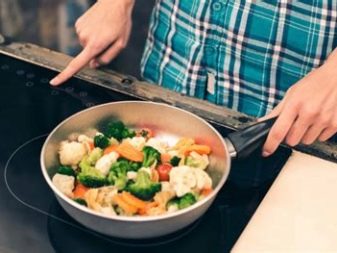
The icon in this case will be made in the form of a spiral, with the inscription Induction.
You can check the suitability of the dishes using a magnet, which should stick to the bottom of the selected container.
Materials (edit)
As the popularity of induction hobs grows, the range of shared pots stands out for its variety. Today, utensils are made from the following types of raw materials.
Stainless steel
Checking with a magnet before purchasing steel utensils is mandatory, since some brands use metal alloys in the production process, which will be incompatible with induction. On sale you can find individual containers for cooking, as well as steel sets, different in size, shape and displacement.

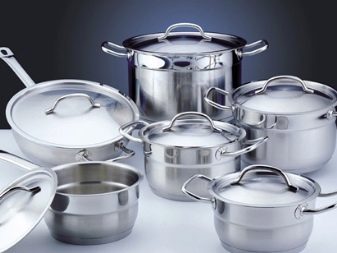
Steel pans are distinguished by their resistance to oxidation, have a non-stick coating, and are suitable for subsequent storage or transportation of ready-made meals.
Steel pans are lightweight, durable and attractive.
Among the weaknesses of the dishes, it is necessary to note the tendency to strong heating, which can lead to burns if handled carelessly.
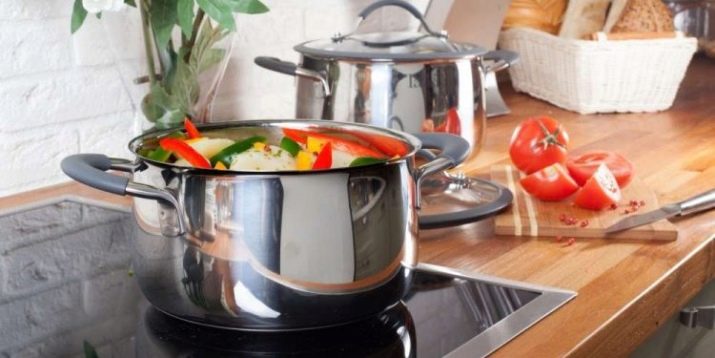
In addition, any touch marks remain on the shiny surface, which can complicate the maintenance of the pan.
Cast iron
Cast iron pots have a long history, due to their positive features, they are popular today, even for use on the latest generation hobs. This metal interacts perfectly with the induction system and stands out for its durability.
In cast iron pans, food heats up evenly, so the dishes are cooked many times faster, the metal keeps the food warm for a long time.
In addition, cast iron is considered absolutely safe for use and direct contact with food.
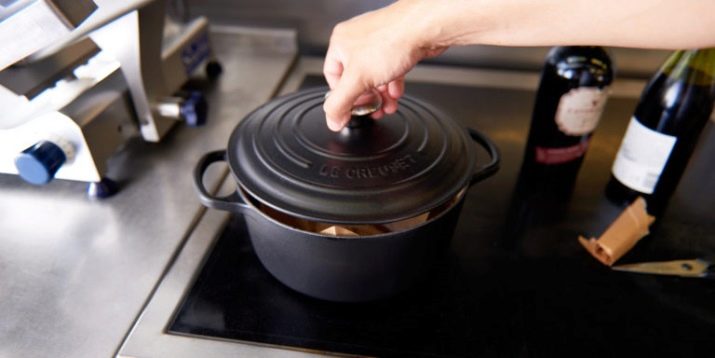
However, cast iron pots are characterized by their impressive mass. Also, if handled carelessly, a container that has fallen on a stone or tiled floor may crack.
Enamelled containers
Pots made of this material are perfect for induction because they are made of enamelled metal. Such containers are not distinguished by their high cost, they have a long service life and an attractive appearance.
But for induction hobs, it is recommended to buy pots with a flat bottom, which will not make unnecessary noise during operation.

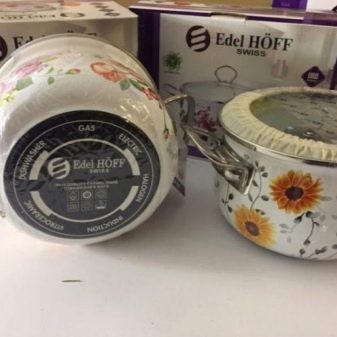
Raw materials are completely safe for human health; food can be stored in enamel containers after cooking.
Aluminum
In order for such cookware to be used with induction cookers, many manufacturers additionally include metal alloys in the bottom.
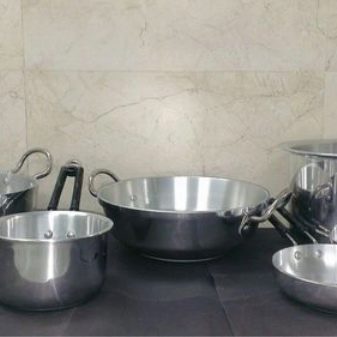
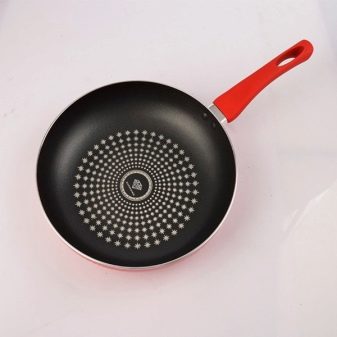
As a rule, stainless steel is used for this.
Glass
Transparent glass pans can also be operated on induction hobs.
They are not so common on the market, but they have an attractive appearance.
Glass stands out for its environmental friendliness, it is easy to care for it.

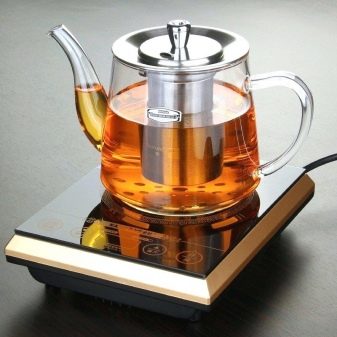
In order to carry out the interaction of the container with the burner, the manufacturers additionally equip the pans with a special magnetic bottom.
Dimensions (edit)
Today, pots of different sizes are on sale, however, the thickness of the bottom is of paramount importance.As a rule, it is from 0.5 to 1 centimeter.
As for the optimal size, the cooking container should be such that it occupies at least 70% of the entire area of the working zone with which interaction will take place.
If the dishes are smaller, then electric currents will begin to spread around, without contacting the bottom of the pan.
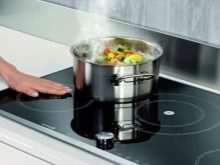
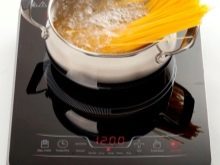
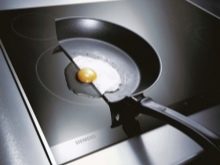
In addition to the fact that it will not be possible to cook food in this way, the magnetic field will also have a negative effect on the nearby equipment and the person.
When choosing utensils for cooking, it is necessary to take into account that the speed of cooking directly depends on the area of contact of the container with the stove.
Therefore, it is better to purchase convenient 3, 5 or 10-liter pots, wide in diameter, but with low walls.
Some modifications of induction hobs have the function of automatically adjusting to the size of the containers used.
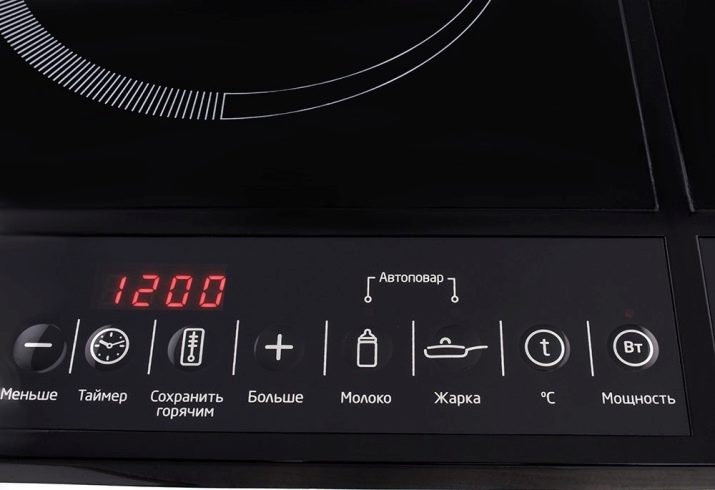
If the burners themselves control the interaction with the bottom of the pan, then any dishes can be in operation: from the smallest volumes to 10 liters or more.
Review of the best models
There are quite a few manufacturers of cookware for induction hobs, but not all of them can boast of great popularity.
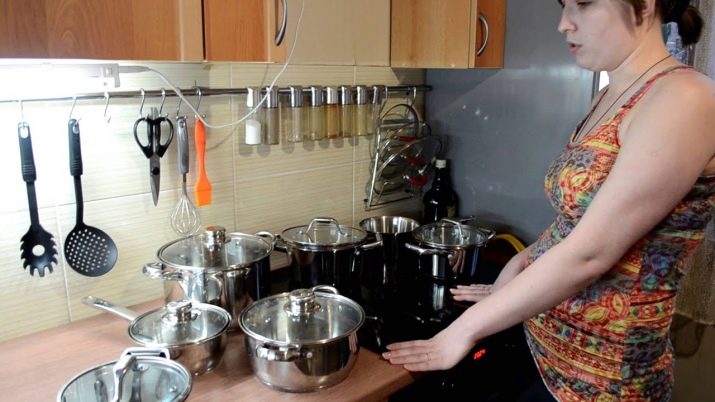

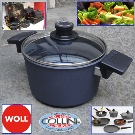
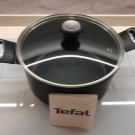
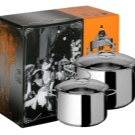
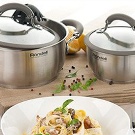
Judging by the reviews, cookware of the following brands is most often chosen for induction hobs.
- Fissler. Cookware from a manufacturing company from Germany, which offers consumers sets of several pots for cooking on induction cookers. The containers stand out for their stylish design, ergonomic shapes and high quality. However, this line belongs to the class of expensive kitchen utensils.
- Woll. An elite line of specialized tableware, a feature of the products is their manual production. Pots come in different sizes, the bottom thickness is within 10 mm. The containers are manufactured with a non-stick titanium ceramic coating.
- Tefal. An internationally renowned French manufacturer that offers a range of pots from the TitaniumPro and PrivilegePro series.
- Rondell. For an induction cooker, you can also choose cookware from this German brand. All pots demonstrate high quality during use.
- "VSPMO". The domestic manufacturer offers a special series of cookware, which is produced under the name "Gourmet". The products have successfully passed certification, therefore, they have the quality mark of the international standard.
Selection rules
When purchasing cookware for induction hobs for the first time, there may be well-founded doubts about the compatibility of products with the hob.
Going to the store, it is recommended to take a magnet with you, which will be able to check the properties of the bottom of the containers you like.
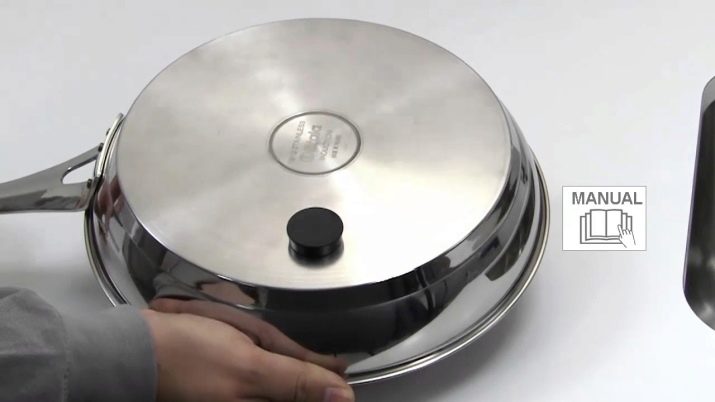
In addition, it is important to note additional nuances that the selected pans must correspond to.
- The main point will be the thickness of the bottom. You can also purchase a product with a thin plate at the bottom, however, there is a high probability that during operation the bottom is deformed from high temperatures. Such dishes will make too much noise during cooking. It is possible that the taste of products may also deteriorate.
- Any raw material can be used as a material for the walls, so you can choose all the models you like, the main thing is that the bottom has inherent ferromagnetic properties.
- Quality products from manufacturers intended for induction hobs will definitely be marked with a spiral badge. Also on the product there may be an inscription Induction, which will greatly facilitate the choice of the buyer.
Operating tips
Any kitchen utensils need regular care and proper use, and pots for induction hobs are no exception.
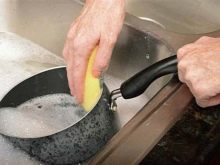
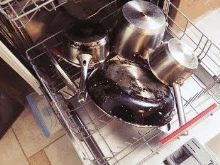
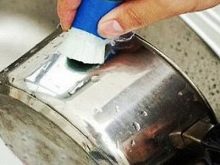
But in the light of their characteristics, they will require compliance with some important recommendations, which will keep the containers attractive and functional for a long time.
- As a rule, most pots can be safely washed not only by hand, but also in the dishwasher. It is best to clean surfaces from dirt and food debris right away, without waiting for foreign inclusions to dry on the container. This will eliminate the need for abrasive chemicals and harsh metal scrapers, which can damage the bottom and sides of the pan, adversely affecting the appearance and subsequent contact with the induction hob.
- For washing, it will be correct to refuse aggressive detergents that can damage the enamel layer on the dishes, as well as lead to corrosion on the metal.
- Cast iron pots should be washed with hot water using a soft sponge. Then immediately wipe the container dry inside and outside to eliminate the risk of rust.
- Aluminum dishes can be easily cleaned of any fatty deposits using table vinegar. With a sponge dipped in this solution, you just need to rub the problem areas so that the pan has an attractive appearance again.
- For enameled dishes, there is a proven remedy that will rid the container of dark areas on the surface. To care for such dishes, you will need to boil them in water with the addition of baking soda.
- To use pots on a magnetic stove, place the containers strictly in the center of the burner so that the bottom covers half of the area.
- The operation of induction cookers and cooking containers is contraindicated for people with pacemakers and other electronic mechanisms.
- During cooking, it is not recommended to bring your hands very close to the surface of the stove, since the radiation that appears will be harmful to a person already at a distance of one centimeter from the source of the magnetic field.
- For cooking on such a stove, you cannot use pots that were previously operated on gas burners. This is due to the presence of carbon deposits on the outer walls, which will become an obstacle to the operation of the induction panel. In addition, in the future, there may be problems with cleaning the burners themselves from carbon deposits.
The secrets of choosing pots for induction cookers can be found in the video.








